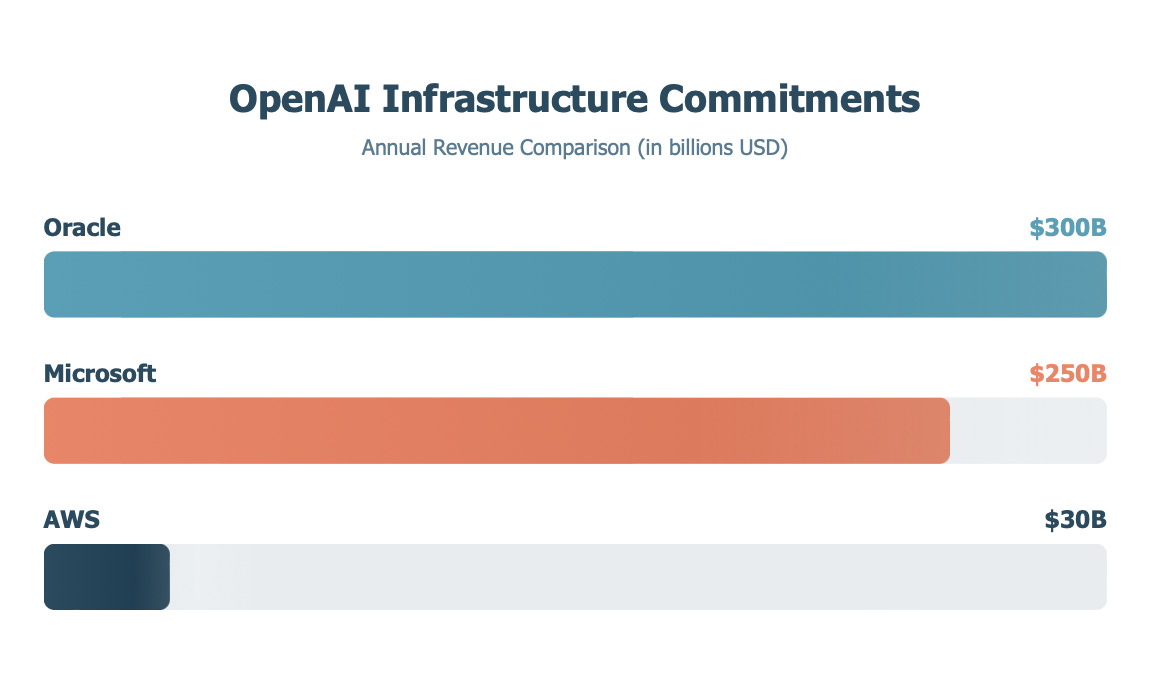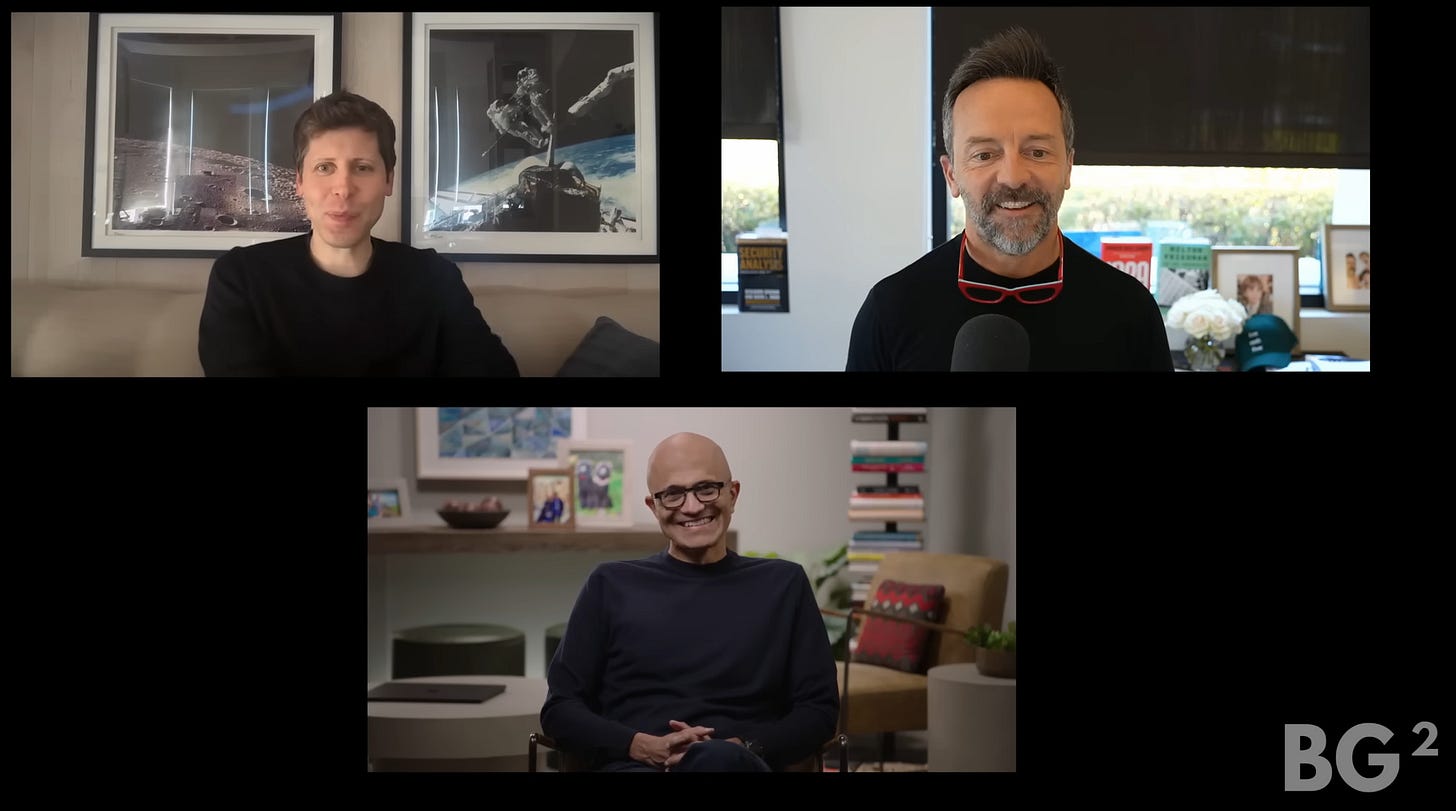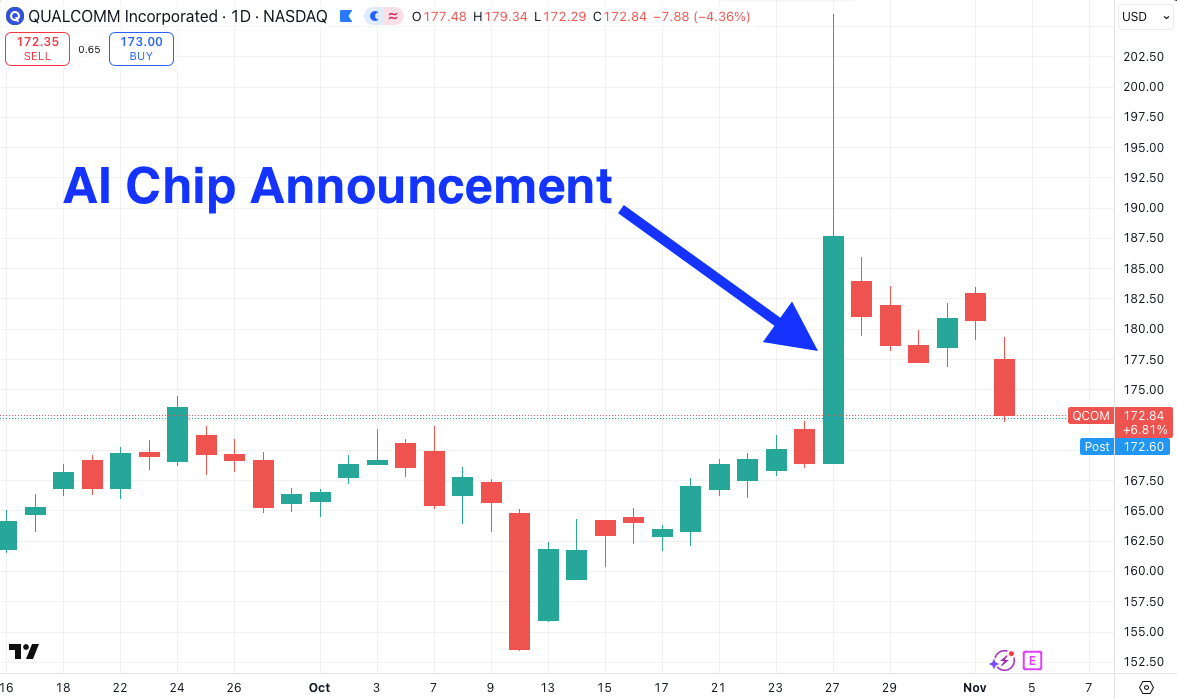OpenAI's $38B AWS Deal, Qualcomm's AI Chip Gamble, & The Battle for India's 1.4 Billion Users
OpenAI hedges against Microsoft and Oracle with AWS, Qualcomm tries AI chips again after 2022 flop, and Google & Perplexity bundle with carriers while OpenAI goes direct in India
OpenAI’s $38B AWS Deal Is Small Hedge Against $1 Trillion in Commitments
OpenAI signed their first contract with Amazon Web Services, buying $38 billion worth of capacity with the leader in cloud infrastructure. They will use hundreds of thousands of Nvidia GPUs in the US.
Now, this deal is pretty small compared to OpenAI’s $300 billion deal with Oracle, or their $250 billion deal with Microsoft.
But even though this deal is relatively small, it lets OpenAI diversify their supply base further from Microsoft. It’s not big now, but gives them a credible lever, similar to their prior announcement with Google.
And OpenAI needs that leverage. Microsoft has access to OpenAI’s IP until 2032, which means Microsoft’s incentives are diverging from OpenAI’s. Microsoft would prefer OpenAI focus on frontier LLMs that improve their integrated products. OpenAI, with over 1 billion ChatGPT users, wants to dominate consumer and enterprise markets, which increasingly means competing with Microsoft.
How OpenAI will pay for this has been a more popular question. In a joint podcast appearance with Microsoft CEO Satya Nadella, Host Brad Gerstner brought up reports that OpenAI is currently bringing in around $13 billion in revenue, which is dwarfed by more than $1 trillion in spending commitments.
Sam’s response wasn’t reassuring.
“First of all, we’re doing well more revenue than that. Second of all, Brad, if you want to sell your shares, I’ll find you a buyer”
Yet Brad didn’t push back, which highlights the critical problem with venture funding.
There is far more money available than good investments, and if you want to be part of the club, you must play the game. That means no scrutiny like you see with public companies.
Imagine any public company CEO responding to a revenue question by saying “if you want to sell your shares, I’ll find you a buyer.”
Eventually, though, you must go public, which OpenAI is reportedly targeting late 2026 for. Let’s see if OpenAI can dramatically increase their revenue with their advertising and shopping initiatives, or if Sam Altman changes how he responds to investors.
Public market investors won’t laugh at defensive deflections. They’ll short the stock, which is exactly what Altman said he’d “love to see” during that same podcast. He might get his wish sooner than he thinks.
Qualcomm Bets Again on AI Chips After 2022 Failure
Qualcomm announced Monday that it will release new artificial intelligence accelerator chips, marking new competition for Nvidia, which has so far dominated the market for AI semiconductors. The stock soared as much as 20% following the announcement, closing the day up 11%.
The 20% jump was surprising. Qualcomm didn’t say much about these chips, and is stuck in a messy middle between Nvidia’s dominant CUDA moat and specially-designed ASICs from companies like Google (TPUs) and AWS (Trainium) that are purpose-built for specific AI workloads.
Also, Qualcomm already tried this with the AI 100 chip, which flopped in 2022.
Perhaps this is why Qualcomm has given back nearly all of their gains since this announcement.
If Qualcomm wants a shot in this space, they need to figure out the software. The initial surge and subsequent crash tells you everything you need to know about investor confidence in Qualcomm’s AI chip strategy.
Google & Perplexity Enter India with Carrier Bundles, OpenAI Responds by Going Direct
Google is partnering with Reliance Jio in India, offering Gemini for free for all 505 million of their customers. This follows Perplexity, who announced their partnership with Airtel’s 360 million subscribers in July 2025.
It seems like Google’s announcement caught OpenAI flat-footed, as they announced a week later that ChatGPT Go will be free with no carrier partnership, going direct-to-consumer.
Going alone in India is rare for tech giants. Even behemoths like Amazon and Netflix partner with mobile carriers, bundling their services into mobile plans and accepting wholesale rates in exchange for massive distribution and zero customer acquisition costs. This makes OpenAI’s direct approach a tougher slog, as India’s mobile market has trained consumers to expect carrier bundles for digital services.
The real question is who will build the most sustainable business model. Indian consumers won’t pay $20/month for AI subscriptions when their entire mobile plan costs $3-5/month.
Perplexity and Google may follow this wholesale playbook, and Google could plausibly succeed. They can offer Gemini at wholesale rates because they’re already monetizing through search ads with their vertically integrated ecosystem.
With India’s 1.4 billion population and massive mobile penetration, proving the wholesale bundle model validates a low-cost, high-scale approach to AI distribution.
If AI companies can make the economics work in markets paying $3-5/month for mobile plans, they’ve cracked the code for monetizing AI in price-sensitive markets worldwide.








Don't CEOs like Sam Altman get prepped for questions like what Brad asked? I can't believe that a $500 billion company decided that was their best answer.
These massive infrastructure commitments highlight an underappreciated angle. OpenAI's $300B Oracle deal and $38B AWS deal mean thousands of data center GPUs, each requiring flawless manufacturing. Behind every chip is a complex supply chain where companies like KLA play a crucial role in inspection and yield managment. When OpenAI scales up compute, semiconductor equipment suppliers see the ripple effect months before.